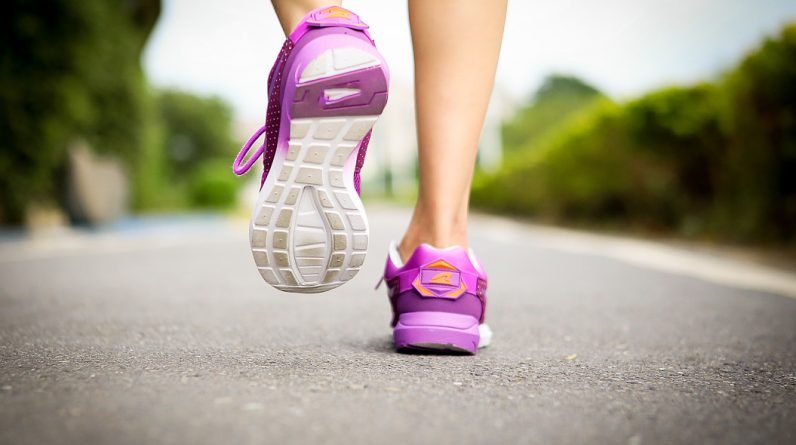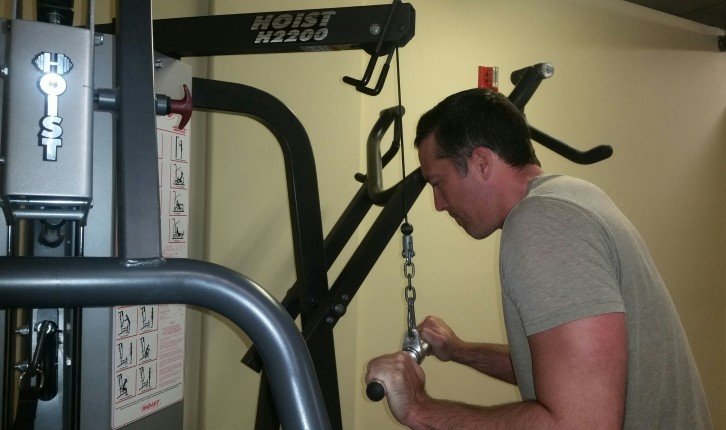In today’s world, where image and appearance play a significant role, the question of whether being fit equates to being attractive often arises. It’s a topic that sparks curiosity and prompts self-reflection. Does having a toned physique automatically make you more appealing to others? This thought-provoking article explores the complex relationship between fitness and attractiveness, shedding light on the multifaceted nature of this intriguing connection. Get ready to challenge your assumptions and discover the true meaning behind the age-old question – does fit mean attractive?
What Does it Mean to be Fit?
Being fit encompasses physical fitness, mental fitness, and emotional fitness. Physical fitness refers to having a healthy and strong body, achieved through regular exercise, proper nutrition, and adequate rest. Mental fitness is the ability to maintain a sharp mind, think critically, and adapt to new challenges. Emotional fitness involves having a strong emotional well-being and being able to cope with stress and adversity effectively.
The Link between Fitness and Attractiveness
There is a strong correlation between fitness and attractiveness. People often perceive physically fit individuals as more attractive due to societal norms and preferences. These perceptions are influenced by various factors, including physical appearance, confidence levels, and the pursuit of an energetic and active lifestyle. However, it is important to challenge the notion that fit always equals attractive, as beauty should be recognized in its diverse forms.
Perceptions of Physical Appearance
Society tends to associate physical fitness with attractiveness, as individuals who exercise regularly and maintain a healthy lifestyle often have toned bodies, glowing skin, and overall physical vitality. These attributes are commonly seen as attractive because they suggest good health, discipline, and strength. However, it is crucial to appreciate that beauty exists in various shapes, sizes, and forms beyond the conventional ideals.
Confidence and Self-Esteem
Physical fitness can also contribute to increased confidence and self-esteem, which can enhance one’s attractiveness. When you feel good about your body and maintain good health, you naturally exude confidence, which in turn can make you more appealing to others. This confidence can also lead to a positive self-image and improved self-esteem, both of which play significant roles in perceptions of attractiveness.
Energetic and Active Lifestyle
Fit individuals often lead energetic and active lifestyles, engaging in activities that increase their endurance, strength, and flexibility. This active way of life can be appealing to others, as it implies a sense of vitality and a zest for life. People are often attracted to individuals who share their interests and passions, and a love for a physically active lifestyle can be an attractive trait for many.
Stereotypical Beauty Standards
While there is a link between fitness and attractiveness, it is important to acknowledge the influence of societal beauty standards. Many traditional ideals of attractiveness are heavily influenced by media and often perpetuate certain body types or features as the epitome of beauty. These standards can create unrealistic expectations and contribute to the limited perception of attractiveness based solely on physical appearance.
Challenging the Notion of Fit = Attractive
It is essential to challenge the notion that fit always equals attractive and recognize the value of diversity and individuality in beauty. Beauty exists beyond physical appearance and encompasses various aspects of a person’s character and identity.
Beauty in Diversity
True beauty lies in diversity, as each person possesses unique features, qualities, and experiences that contribute to their attractiveness. Embracing and celebrating diversity is crucial to promoting a more inclusive definition of beauty, one that appreciates the beauty found across different body shapes, sizes, ethnicities, and abilities.
Body Positivity Movement
The body positivity movement has gained momentum in recent years, aiming to challenge societal beauty standards and promote self-love and acceptance. This movement encourages individuals to embrace and celebrate their bodies, regardless of their shape, size, or physical abilities. By shifting the focus away from external appearances, the body positivity movement promotes a more holistic view of attractiveness.
Healthy vs. Unhealthy Obsessions
While fitness is important for overall health and well-being, it is crucial to differentiate between healthy pursuits of fitness and unhealthy obsessions with appearance. A healthy approach to fitness involves focusing on nourishing the body, engaging in enjoyable physical activities, and maintaining balance. On the other hand, an unhealthy obsession with appearance may lead to disordered eating, excessive exercise, and negative body image. It is important to prioritize mental and emotional well-being alongside physical fitness.
The Importance of Individual Preferences
Attractiveness is subjective and highly influenced by individual preferences, values, and beliefs. What you find attractive may differ from what someone else finds attractive, and that is perfectly valid.
Different Definitions of Attractiveness
Each person has their own unique set of preferences when it comes to attractiveness. While some individuals may be drawn to physical attributes such as height, hair color, or body shape, others may prioritize qualities such as kindness, intelligence, or a good sense of humor. Understanding and respecting these individual differences is crucial in promoting a more inclusive and comprehensive view of attractiveness.
Personal Values and Beliefs
Personal values and beliefs play a significant role in perceptions of attractiveness. For example, someone who values intelligence and education may find intellectual conversations and wittiness extremely appealing. Likewise, someone who values kindness and compassion may be attracted to individuals who display empathy and a strong sense of social responsibility. By recognizing and appreciating these personal values and beliefs, we can cultivate deeper connections based on qualities beyond physical appearance.
Looking Beyond the Physical
Attractiveness goes beyond physical appearance and encompasses various aspects of an individual’s character and interests.
Personality Traits
Personality traits such as kindness, empathy, confidence, and a good sense of humor can greatly contribute to someone’s attractiveness. These qualities shape how individuals interact with others, form connections, and leave a lasting impression.
Intelligence and Wit
Intellectual stimulation and the ability to engage in meaningful conversations can also enhance one’s attractiveness. Intelligence and wit are often seen as attractive qualities, as they demonstrate mental agility, curiosity, and the ability to think critically.
Interests and Passions
A person’s interests and passions can make them more attractive as they reflect their unique experiences, hobbies, and values. Sharing common interests or being curious about someone else’s passions can lead to a deeper connection and an increased sense of attractiveness.
The Role of Media and Society
Media and societal influences significantly shape the perception of attractiveness, often setting beauty standards that can be restrictive and exclusionary. Acknowledging and understanding the role of media in shaping these standards is essential to promoting a balanced view of attractiveness.
Media’s Influence on Beauty Standards
Media outlets, such as magazines, television shows, and social media platforms, often portray a narrow definition of beauty that places excessive emphasis on certain physical attributes. These idealized images can create unrealistic expectations and contribute to feelings of inadequacy and low self-esteem.
Effects of Social Media
Social media platforms have also played a significant role in shaping beauty standards and perceptions of attractiveness. The curated nature of social media often showcases only the highlight reel of people’s lives, presenting an edited and idealized version of reality. This can lead to comparisons and feelings of insecurity among individuals who do not fit the societal mold of attractiveness.
Shifting Beauty Standards
Fortunately, there has been a growing shift in recent years towards promoting diverse beauty standards. Many brands, influencers, and organizations are striving to showcase a broader range of body shapes, sizes, and ethnicities in their campaigns and content. This movement towards inclusivity is challenging societal norms and promoting a more balanced and realistic view of attractiveness.
Promoting a Balanced View of Attractiveness
To promote a balanced view of attractiveness, it is important to foster self-love and acceptance, educate about the dangers of unrealistic beauty standards, and celebrate inner beauty.
Encouraging Self-Love and Acceptance
Encouraging individuals to love and accept themselves as they are is essential in promoting a balanced view of attractiveness. Emphasizing self-care, practicing positive self-talk, and forming healthy relationships with our bodies can contribute to improved self-esteem and a healthier perspective on attractiveness.
Education and Awareness
Raising awareness about the negative effects of unrealistic beauty standards and media influence is crucial in promoting a more balanced view of attractiveness. By educating individuals about the manipulation of images, the dangers of comparing oneself to unrealistic ideals, and the importance of self-acceptance, we can empower people to reject narrow beauty standards and redefine their own definitions of attractiveness.
Celebrating Inner Beauty
It is important to celebrate and recognize the beauty that exists within each individual. Inner beauty, encompassing qualities such as kindness, empathy, and compassion, often shines through and has a lasting impact on others. By highlighting the significance of inner beauty, we can shift the focus from external appearances and cultivate a more inclusive and holistic perspective on attractiveness.
Conclusion
Fit does not always mean attractive. While fitness can contribute to perceptions of attractiveness, beauty encompasses a diverse range of physical appearances, personality traits, interests, and passions. It is crucial to challenge societal beauty standards, embrace diversity, and promote self-love and acceptance. By recognizing and celebrating the multi-faceted nature of attractiveness, we can foster a more balanced and inclusive society.



